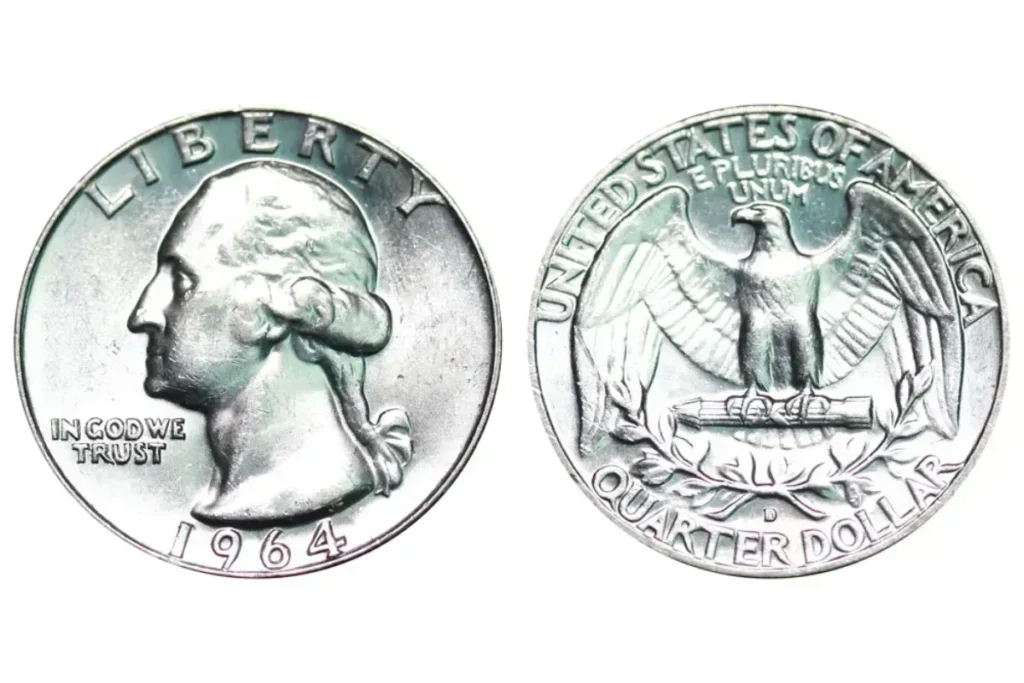The 1964 Jefferson Nickel might seem like an ordinary coin, but some varieties can be quite valuable. Produced during a coin shortage in the early 1960s, this nickel was
minted in huge quantities, but some coins have rare errors that make them worth much more than their face value. Let’s explore these rare errors and what makes them special.
Key Error Types to Look For
Full Steps (FS) Designation
Definition: The Full Steps designation means that the steps on Monticello, the building on the back of the coin, are clearly visible. A nickel with five or six full steps is considered rare.
Value: These can be worth between $20 and $15,000. For example, a 1964 FS Nickel graded MS67 sold for $14,100 in 2017.
1964 Nickel Struck on a 1C Planchet

Definition: This error occurs when a 1964 nickel is struck on a one-cent (1C) planchet, which makes the coin lighter and gives it a distinctive copper color.
Value: A nickel with this error, in an AU58 grade, sold for around $180. Higher grades can be worth about $299.
Four Strikes and Three Off-Center Error
Definition: This rare error happens when a coin is struck four times, with three of these strikes off-center, resulting in a misaligned design.
Value: Coins with this error can be worth up to $1,200, depending on their condition.
Late Brockage Error
Definition: A brockage error happens when a coin shows irregularities on both sides due to a malfunction during the striking process.
Value: A 1964 nickel with this error, graded MS62, was sold for around $400.
Nickel Struck on a Philippine 10-Centavo Planchet
Definition: During a time when the Philippines was under U.S. administration, some nickels were mistakenly struck on planchets meant for Philippine 10-centavo coins.
Value: These lighter coins can fetch prices as high as $1,000.
1964 Nickel Error Value Table
| Error Type | Description | Approximate Value |
|---|---|---|
| Full Steps (FS) | Clear visibility of all steps on Monticello | $20 – $15,000 |
| Struck on 1C Planchet | Nickel struck on a one-cent planchet | $180 – $299 |
| Four Strikes and Three Off-Center | Four strikes with three off-center | Up to $1,200 |
| Late Brockage | Irregularity on both sides due to striking error | $400 |
| Struck on Philippine 10-Centavo Planchet | Nickel struck on a planchet meant for Philippine coins | Up to $1,000 |
The 1964 Jefferson Nickel is more than just a common coin. With the right errors, it can become a valuable collector’s item. Whether it’s the Full Steps designation or a rare off-center strike,
these errors can significantly increase a nickel’s worth. If you come across a 1964 nickel, check it carefully—it might just be worth more than you think!
1. What makes a 1964 Jefferson Nickel valuable?
A 1964 Jefferson Nickel can be valuable if it has rare minting errors. These include Full Steps on Monticello, being struck on a one-cent planchet, multiple strikes, or errors from being struck on incorrect planchets like those for Philippine coins.
2. How can I tell if my 1964 nickel has Full Steps?
To have Full Steps, the steps on Monticello (the building on the back of the coin) need to be clearly visible. You can check this by closely inspecting the coin under good lighting. Coins with five or six visible steps are considered rare.
3. What is a nickel struck on a 1C planchet?
This error occurs when a nickel is struck on a planchet (the blank piece of metal) intended for a one-cent coin. The result is a nickel that is lighter and has a copper color, which makes it a unique find.
4. How much can a 1964 nickel with multiple strikes be worth?
A 1964 nickel with four strikes, especially if three are off-center, can be worth up to $1,200, depending on its condition. This rare error makes the coin particularly valuable to collectors.
5. What is a Late Brockage error?
A Late Brockage error occurs when a coin shows irregularities on both sides due to a malfunction during the striking process. These errors are rare and can make a 1964 nickel worth around $400.









